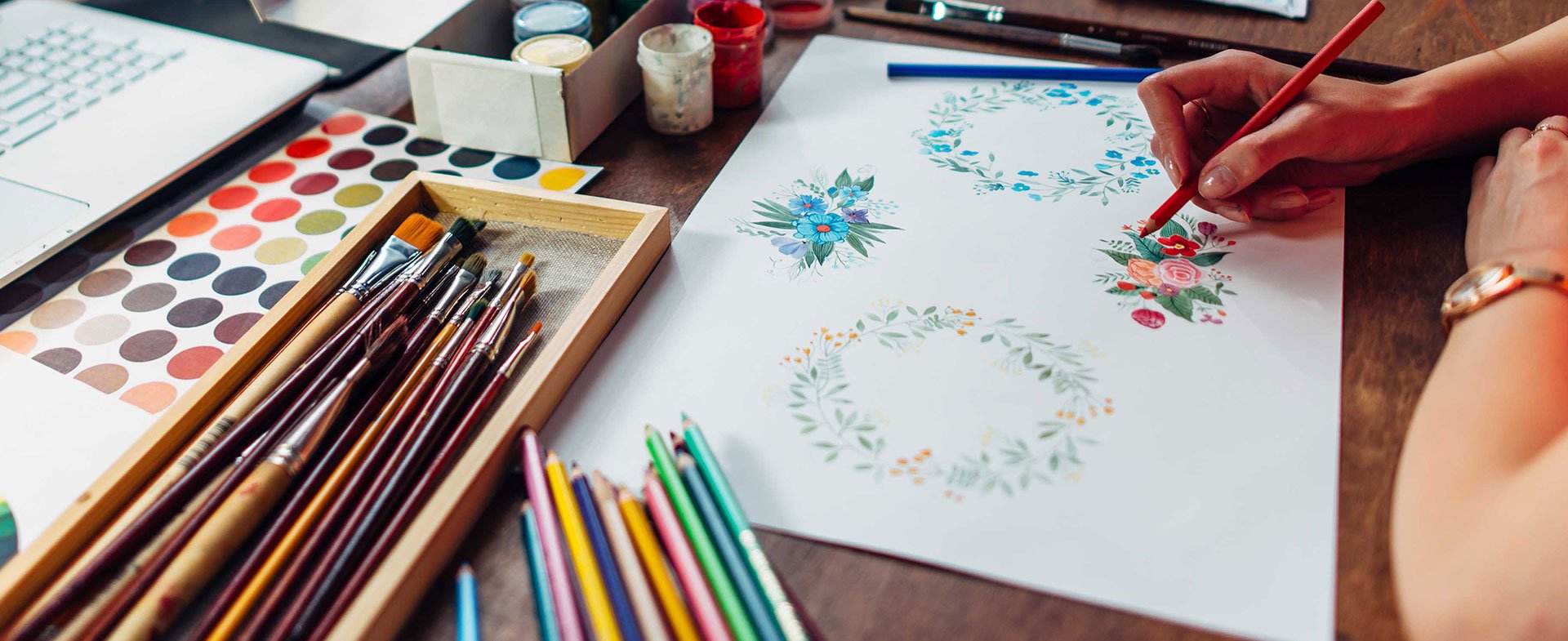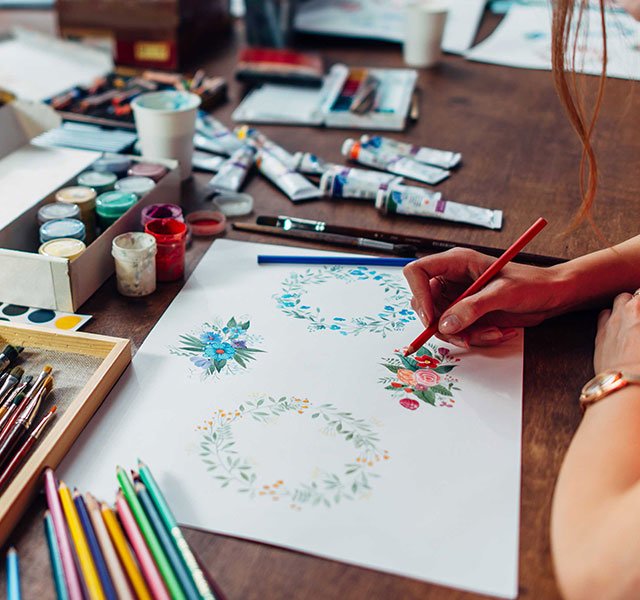Whether you toil over an oil canvas or doodle mindlessly on a page, research suggests the act of creating art has powerful healing properties. In a study published in the journal Art Therapy, three-quarters of participants experienced lower levels of the stress hormone cortisol during their 45-minute art-making session – regardless of previous art experience.
“If you can pinch clay or hold a pencil, if you can touch, see, smell or hear, art is for you,” says Mallory Montgomery, an art therapist at Henry Ford Health. “Through art, even people who don’t view themselves as creative end up reconnecting to that childlike sense of play and enjoyment they had when they got their first box of crayons in kindergarten.”
How Art Heals
Here, we ask Montgomery about how art works its magic on both body and mind.
Q: How does art contribute to healing?
A: Art is healing because it forces you to forge a connection between your mind and your body. Unlike exercise, which works your body, or meditation, which clears your mind, art-making accesses both mind and body to promote healing. Every time you sit down to write a song or paint a picture, you’re using mental processes in a physically engaging activity.
Q: How can art help people navigate disease?
A: It is hard to be bogged down in negative feelings and fear when you’re creating a piece of art. Instead, you experience a grounding, present and rewarding sense of connecting with yourself. You can even learn to engage with and interact with your art – asking it questions, engaging in a dialogue with your creation and uncovering information about yourself. It sounds hokey at first, but there’s a world of wisdom to be gained from connecting with yourself in this way.
Q: How do you use art to make meaning?
A: Art therapists use color, lines and symbols to express internal states. So we can tell a person, “If your journey through cancer started with a seed at diagnosis, now that you are in remission, how has that tree grown? What does that seed look like now?” Together, we will unpack what they make. I’ll ask them to tell me about the leaves, the roots, the colors, the apples or flowers. The goal is to help patients look at their art through a lens that provides deeper insight about their journey.
Q: Are there specific techniques that promote healing?
A: For patients who are in pain, we’ll often do “body mapping.” I might give you a literal outline of a human body and ask you to indicate where you have pain with little red dots. Then, I’ll ask you to cover over them, essentially destroying them and transforming them into something new.
Q: What about patients who feel ill-equipped or unable to create?
A: Many of my oncology patients use all of their energy getting in the door for treatment. So instead of asking them to create, I empower them by giving them the creative reins. They tell me what to make and which colors to use. And since they’re in charge, they still get the benefits of accomplishment. When the art is done, whether they made it or made it through my hands, there’s still an emotional and mental dialogue that happens.
Even if you feel like you’re not artistic or creative, art therapy is still a powerful healing tool. The key is breaking through the glass boxes we create for ourselves. “I encourage people to start small with something like a coloring sheet or a simple origami bird,” says Montgomery. “Art therapy is about having fun through self-exploration – not winning an art prize.”
You can even expand beyond “traditional art.” Play with weird materials like cardboard, old clothing or quilting fabric or broaden your definition beyond visual art to include creative endeavors like movement, music or the written word.
If you want more information on Henry Ford’s art therapy programs or would be interested in volunteering, email mmontgo2@hfhs.org.
Mallory Montgomery has a master of science degree in art therapy and is a Registered Art Therapist-Provisional (ATR-P) and a Registered Behavior Technician (RBT), who works with Henry Ford Cancer patients.



